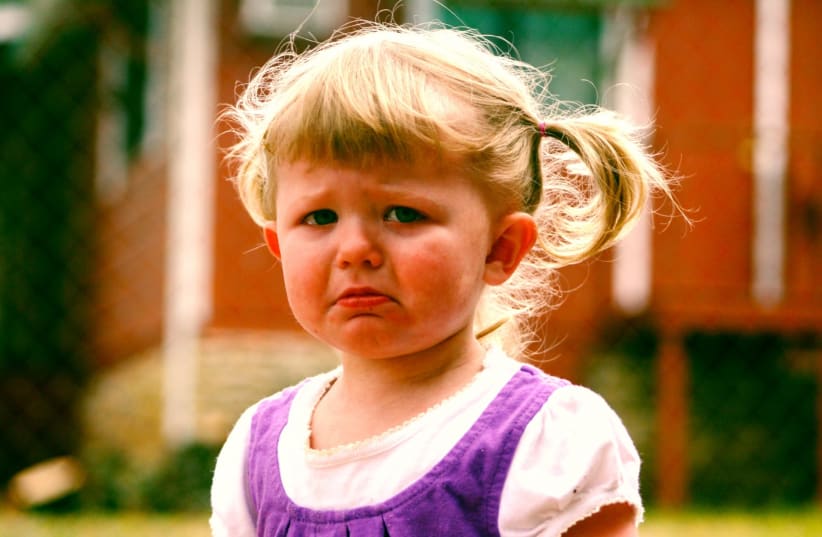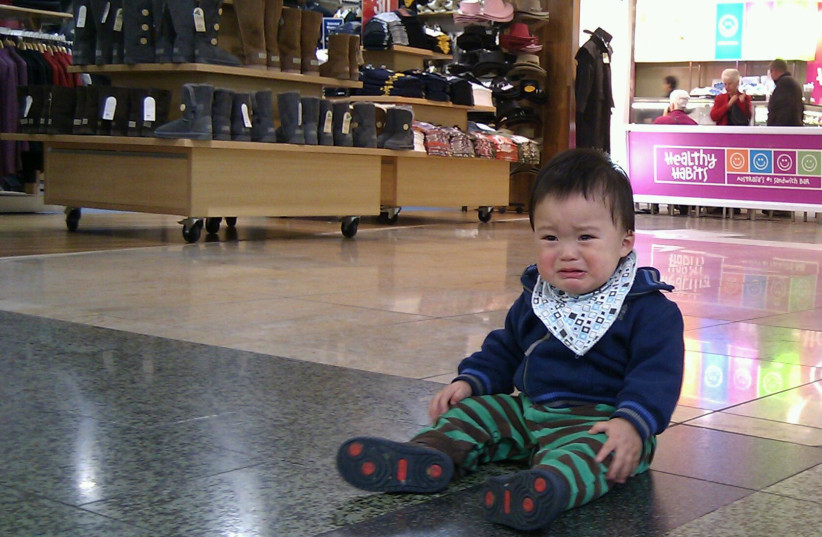We have all seen little kids lying on the floor of the mall shouting with embarrassed, helpless parents standing next to them. You may have thought: “my kids will never act this way,” but what happens when this becomes your reality, and how are you to treat it?
Dana Hovesh, a certified parent counselor at the Adler Institute, an Israeli parenting counseling nonprofit, and at the Israeli Health Ministry, explained that from about the age of 18 months, children begin the process of separating from their parents and begin to register themselves as independent beings.
At that point, they start to realize that they want different things than what their parents might want and that they can do activities on their own, like building a tower of blocks. This knowledge and their actions make them realize that they can do things independently.
The difficulty begins when parents refuse their children's requests for what can be a myriad of reasons. Suddenly, out of nowhere, begins a horror show of crying, shouting, prostrating, throwing objects and more. What happened?
Parents say "no" or " that’s not allowed," and the child comes up against the limit that has been set, and is unhappy and becomes frustrated as a result. Because the nervous system of the child isn’t fully matured, it is hard for kids to regulate emotions so they experience frustration with great intensity.
How can you help a child who’s frustrated?
These are the steps you should take:
Control the environment
If you’re in public, move the children to a quiet place and let them have it out. As long as they don’t harm themselves or anyone around them, let them cry and shout. Don’t panic; this is a part of their natural development. This is how they first deal with frustration.
Exercise understanding
Interact with your kids at an eye-to-eye level so they will feel that you know what they’re going through even if you think it's nonsense. Remember how much it helps that when you're going through a difficult time, your friends listen and understand you. For example, you can say: "I understand you wanted another cookie, it's really yummy, right? If it was healthy we would have eaten the whole package together."
Name the emotions
Help the kids verbally name what they’re feeling. When they can express the emotion they are feeling, the frustration will lessen. For example, say: "I see that you are angry; I am not letting you eat another cookie.”
Present other choices as options
Allow kids to choose from other options after you set the limit for them. For example, say: "Would you like to wash an apple or pear with me? Tomorrow you can eat another cookie."
Encourage them to overcome their frustration
If you as a parent can handle these tough situations in a calm yet firm manner, kids will learn to be able to cry a bit, say why they are sad or frustrated and move on. If you try to just get them to be quiet, without allowing for the acknowledgment of their feelings, their frustration will only grow.
Conversely, if you encourage their ability to overcome frustration, this will eventually lead to them having a healthier relationship with frustration and a greater ability to recognize and express their emotions.
Remember that your kids aren’t against you; they are simply expressing what they want. You need to support, understand and encourage them as they grow and give them the feeling you’re there for them in any situation and accept them as they are.
This article was written in partnership with the JAMA parenting app.

